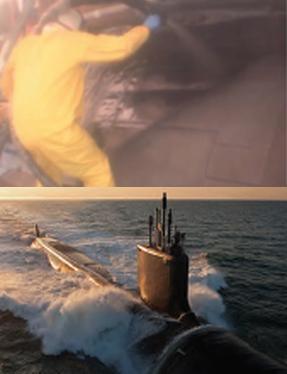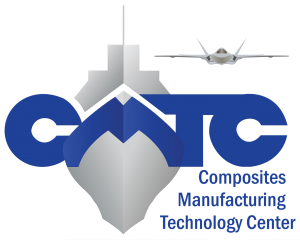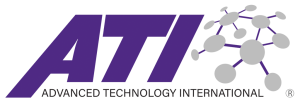
Overview
Project Number: S2655-1
Project Technology: Automated Manufacturing of Hull Tiles Phase 1
TOTAL MANTECH INVESTMENT: $1,200,000
Objective
The objective of this effort is to develop an automated manufacturing technique for large and/or complexly configured tiles, thus reducing cycle time and improving manufacturing rate and response time to tile design and formulation changes. A second benefit is the insight to be gained from this technology and its potential use to apply the existing treatment directly to the hull, thus superseding the molding process. This project could lead to a follow-on task to improve SHT installation efficiency of the material currently molded on the hull. This effort would be applicable to new SHT configurations on Block V, back-fit on VIRGINIA Class submarines, and potentially applicable to OHIO Replacement (OR).
Payoff
The main benefit of Phase 1 is the ability to manufacture large and/or complexly configured tiles using existing treatment material formulations. This would permit the lateral development of spray application techniques to replace existing techniques and facilitate on-hull additive manufacturing and enable the exploration of additional formulations for future development. Completion of Phase 2 will lead directly to manufacturing of complex tiles. The completion of both phases would amount to an estimated cost savings of $1M per ship. This assumes a shipset of approximately 550 large tiles intended to replace roughly 25% of existing hull treatment. Automation of the manufacturing process will reduce the size of the crew as well as eliminate the need for large scale ovens and precise metal molds. Specialty shapes could be programmed, which would result in minimal trimming of tiles, eliminate the need to cut specific shapes from slab stock, and reduce both labor and material waste. Automation will also reduce the cycle time per tile, which is heavily dependent upon assembly, disassembly, and reassembly of tooling. The automated process would not require tooling changes, and would depend solely on the rate at which material could be deposited and the tile built up. This could reduce the process from 4 days to as short as 24 hours. In the event that only Phase 1 is completed, savings would not be associated with replacing an existing VCS trowel application with a spray application. Benefits include improved process control, less rework, improved reliability, and a greater degree of design flexibility. Potential cost savings for this application is estimated to be $100K per ship.
Implementation
The implementation of this effort will occur in two phases over 5 years and will be composed of two principal efforts, development of the material processing parameters and integrating those with an optimized automated methodology. This project will end with a direct transition to Phase 2 to develop a full scale manufacturing demonstrator.
*Prepared under ONR Contract xxxxxx-xx-x-xxxx as part of the Navy ManTech Program.
*DISTRIBUTION STATEMENT A. Approved for public release: distribution unlimited. DCN# xxxx-xxx-xx

